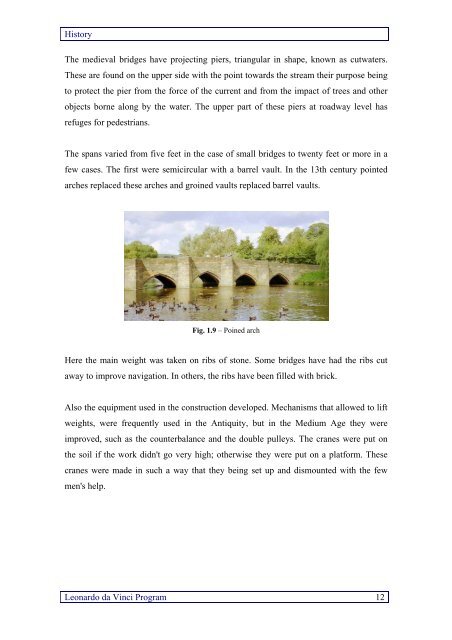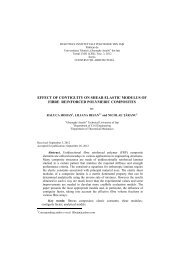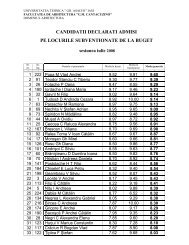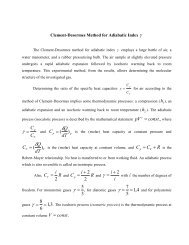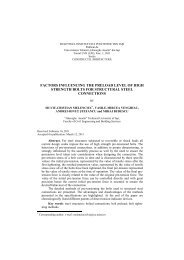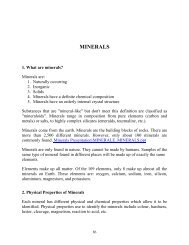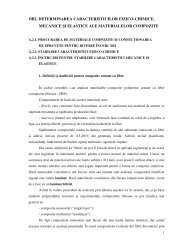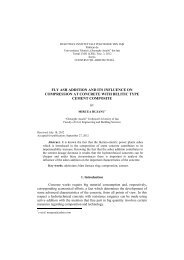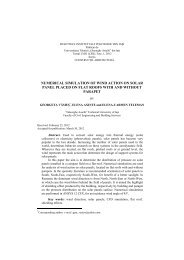STRENGTHENING OF STONE MASONRY ARCH BRIDGES THREE ...
STRENGTHENING OF STONE MASONRY ARCH BRIDGES THREE ...
STRENGTHENING OF STONE MASONRY ARCH BRIDGES THREE ...
Create successful ePaper yourself
Turn your PDF publications into a flip-book with our unique Google optimized e-Paper software.
History<br />
The medieval bridges have projecting piers, triangular in shape, known as cutwaters.<br />
These are found on the upper side with the point towards the stream their purpose being<br />
to protect the pier from the force of the current and from the impact of trees and other<br />
objects borne along by the water. The upper part of these piers at roadway level has<br />
refuges for pedestrians.<br />
The spans varied from five feet in the case of small bridges to twenty feet or more in a<br />
few cases. The first were semicircular with a barrel vault. In the 13th century pointed<br />
arches replaced these arches and groined vaults replaced barrel vaults.<br />
Fig. 1.9 – Poined arch<br />
Here the main weight was taken on ribs of stone. Some bridges have had the ribs cut<br />
away to improve navigation. In others, the ribs have been filled with brick.<br />
Also the equipment used in the construction developed. Mechanisms that allowed to lift<br />
weights, were frequently used in the Antiquity, but in the Medium Age they were<br />
improved, such as the counterbalance and the double pulleys. The cranes were put on<br />
the soil if the work didn't go very high; otherwise they were put on a platform. These<br />
cranes were made in such a way that they being set up and dismounted with the few<br />
men's help.<br />
Leonardo da Vinci Program 12


